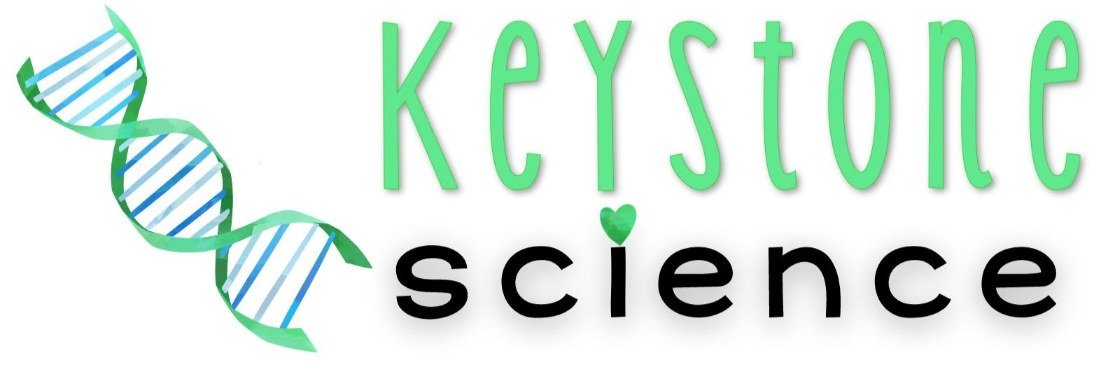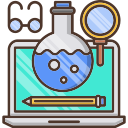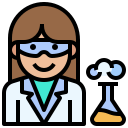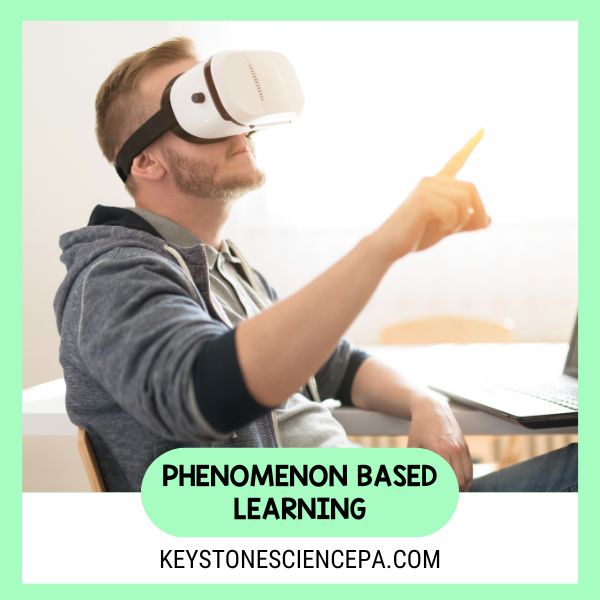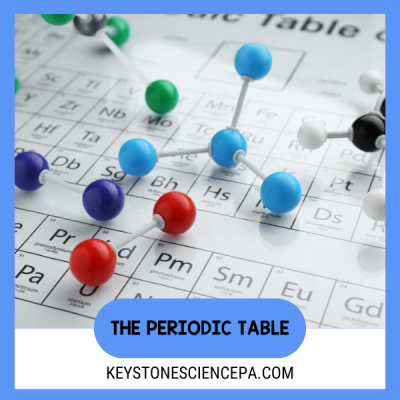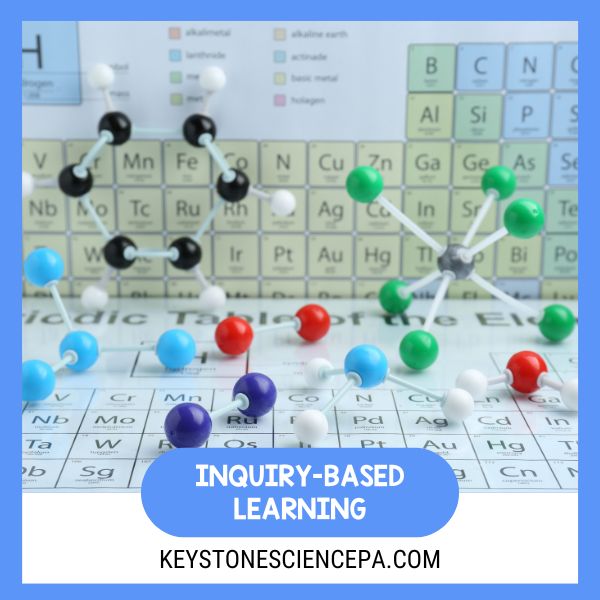NGSS Phenomena-Based Learning – what is it, and why is it so critical for the success of inquiry based learning?
We’re breaking all of that down here in this series of blog posts.
If you’re new to NGSS in general (the Next Generation Science Standards), then be sure to open this blog post in another tab – because it’s going to give you everything you need to know as a high school science teacher.
Inquiry based learning has become a catchphrase in itself over the past decade – so if you’d like to learn more about what inquiry based learning is (and what it actually looks like in practice), read this other blog series about my take on inquiry based learning (Post 1 and Post 2).
If you’re looking to learn more about NGSS Phenomena-Based Learning…Then you’re in the right place.
Let’s dive in.

Introduction to NGSS Phenomena-Based Learning
We live in a time of ongoing scientific advancement.
Subjects like biology, chemistry, and environmental science aren’t just subjects to be focused on in college – and, in fact, we’re often training our students for careers that don’t exist yet.
But, I’m sure you know that as a science teacher.
You’ve chosen your subject because you have a passion for science, and because you see the vision of why these subjects matter (science puns, anyone?).
Focusing on phenomena is going beyond ensuring that our lessons and experiments are NGSS aligned.
We’re ensuring that students become curious, critical thinkers who learn how to interact with the world around them.
This is where the NGSS phenomena comes in.

What is a phenomenon?
Picture this – you’re on a hike, and you spot a beautiful monarch butterfly fluttering by.
That, my friends, is a phenomenon.
In the world of the Next Generation Science Standards (NGSS), a phenomenon is simply an observable event that happens in the universe.
It can be as simple as a tree losing its leaves in the fall, or as complex as how cells regenerate and heal a cut.
Now, here’s where it gets exciting for us teachers.
Phenomena aren’t just things to gawk at and then move on.
These events open the doors to scientific exploration.
They’re a perfect way to pique students’ curiosity and give them a real-world context for understanding abstract scientific principles.
One of the best parts about phenomena is that this learning process is naturally inquiry based and student led.
When your students ask why that tree loses its leaves, or how their scraped knee miraculously heals, you have an opportunity to let them explore.
You’re not just answering questions, but guiding your students to discover the answers for themselves.
Why does this matter?
Because phenomena are all about engagement.
They transform your classroom into a hub of curiosity, inquiry, and exploration.
They take those tricky scientific concepts out of the textbook and bring them to life in the real world.
And, let me tell you, there’s nothing quite as rewarding as seeing your students’ eyes light up as they make connections and discover the incredible science behind everyday occurrences.
What are examples of scientific phenomena?
If you’re new to phenomena (or, just new to NGSS in general), then you might be wondering what some examples of said phenomena might look like.
Let’s talk through some common examples of phenomena that your students might observe:
- Gravity Defying Water
Ever tried the old trick of swinging a bucket of water over your head and somehow not getting drenched? That’s a phenomenal example of centrifugal force – and it’s not magic, it’s science! - Rainbow Formation
Ah, the beauty of a rainbow after a rain shower. But did you know that rainbows are a result of refraction, reflection, and dispersion of light in water droplets? There’s so much you could do with that phenomena in the name of inquiry. - Photosynthesis
Ever have students wonder how plants turn sunlight into food? There are so many directions an exploration could take. You could talk about energy transfer, chlorophyll, the color wheel… limitless possibilities! - Bioluminescence
Ever see a firefly on a summer night or images of glowing jellyfish in the deep sea? These critters are examples of bioluminescence, a phenomenon where light is produced by a chemical reaction within a living organism. If this isn’t a naturally occurring phenomenon where you live, you could show a video and ask what students notice. And/or, use an app like Nearpod to take your students on a virtual field trip. - The Changing Seasons
If you live in the northern or southern latitudes it’s cold in the winter and hot in the summer. Leaves change color in fall and flowers bloom in the spring. Once students observe this, they can start asking other questions to arrive at why this is. These are phenomenal examples of the natural rhythms and adaptations in nature tied to the tilt of the Earth and its rotation around the sun.
Think about some naturally occurring phenomena that happen where you live.
Is there a way you could guide students to observe, then ask questions about it?
Or, could you build your science lessons in such a way that students have built-in time for inquiry everyday?
This is easier said than done – so if you need help with this, get on my email list!
I’m always sharing resources and ideas to help you do this effectively.

How can I use phenomenon-based learning in my classroom?
Phenomenon-based learning, to put it simply, is about anchoring learning around observable phenomena – things we can see, touch, or measure in the real world.
This method keeps science relevant and accessible to students.
Let’s take cycling nutrients in the environment as an example.
Imagine standing at the edge of a dense forest.
You see plants growing, animals scampering about, the sun beaming down, and maybe even raindrops falling onto leafy surfaces.
Each of these observations is connected to one or more biochemical cycles: the carbon cycle, the water cycle, the nitrogen cycle, and so on.
These cycles are nature’s way of recycling essential nutrients – life’s very own circular economy!
In phenomenon-based learning, we would start with these observations – these phenomena – and build our learning journey around them.
Instead of starting with the abstract idea of a nitrogen or carbon cycle, we’d begin with what students can observe: plants growing, animals eating, rain falling.
From there, we’d ask probing questions and make predictions:
- Why are these processes happening?
- How do they affect the environment?
- What would happen if a part of the cycle were interrupted?
This process of learning isn’t just about finding the answers to questions; it’s about learning to ask better questions.
Inquiry based learning is naturally based on, well, inquiry!
These questions lead us deeper into the interconnected biochemical cycles, making the learning process more engaging and meaningful.
Once students are hooked and engaged, they can start delving into an investigation.
To help visualize and understand these cycles, check out the Diagram Labeling Nutrient Cycling resource available on my website. It’s a hands-on way to map out the nutrient cycles by labeling and connecting the different stages.
Your Next Steps
If you want to know how to effectively implement phenomena in your science classroom, stick around for part 2 of the blog next week where I will give you actionable steps to implement phenomena in your classroom. Your students will be more engaged and excited for science!
Need more support integrating phenomena into your daily science teaching routine?
I’d love to help you.
Here are some ways I can support you:
- Get on my email list for tips and ideas
- Click here to connect with me on Instagram
- Need lesson plans and activity ideas? Click here to check out my web store
